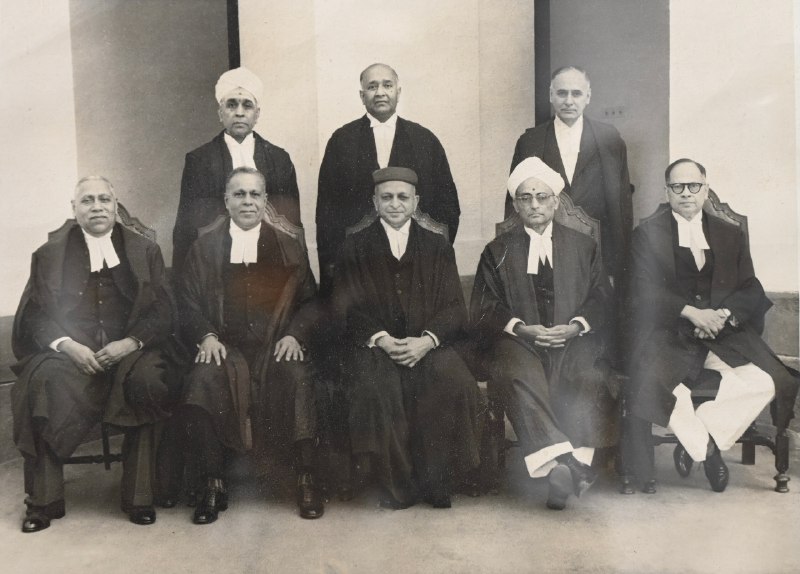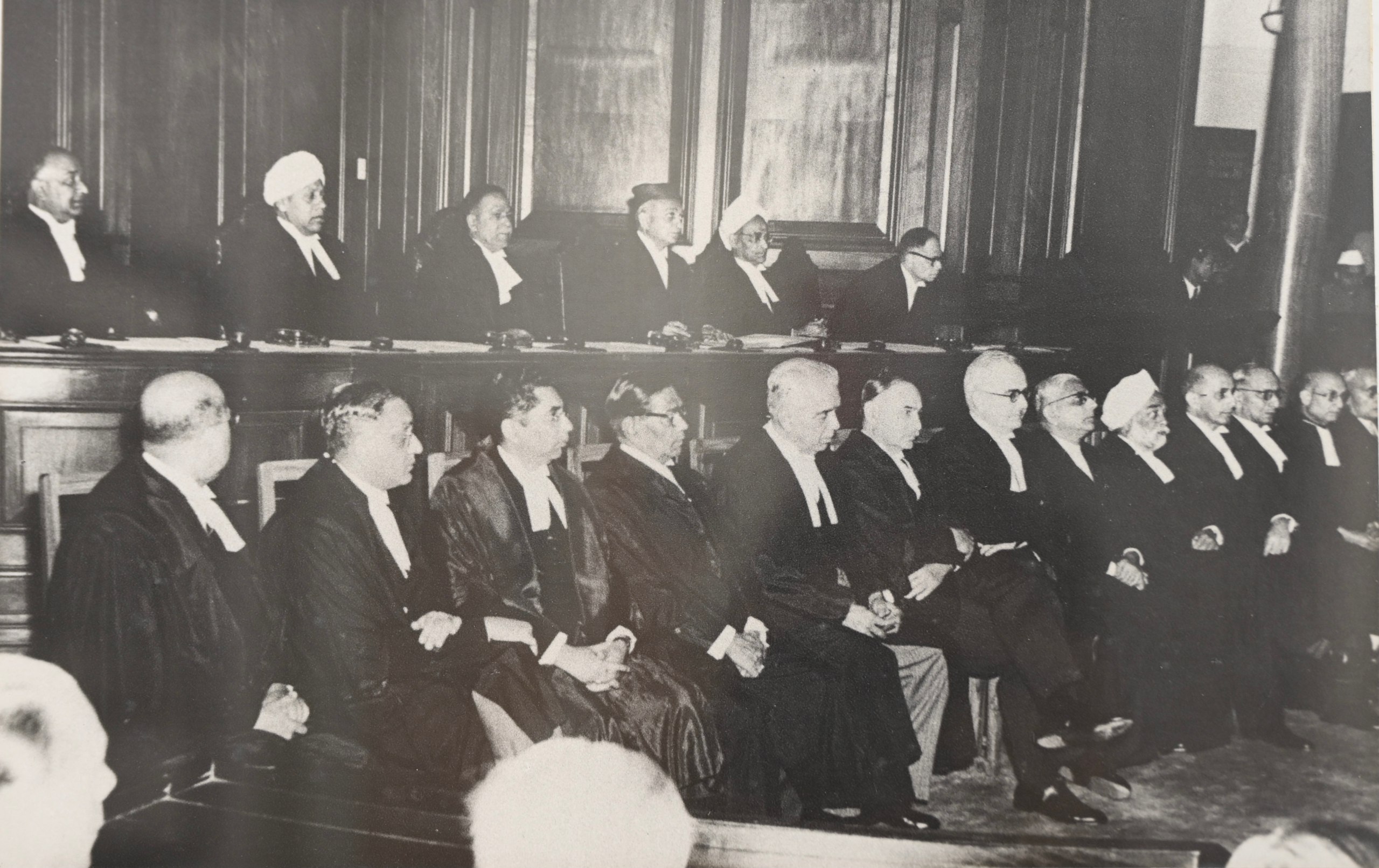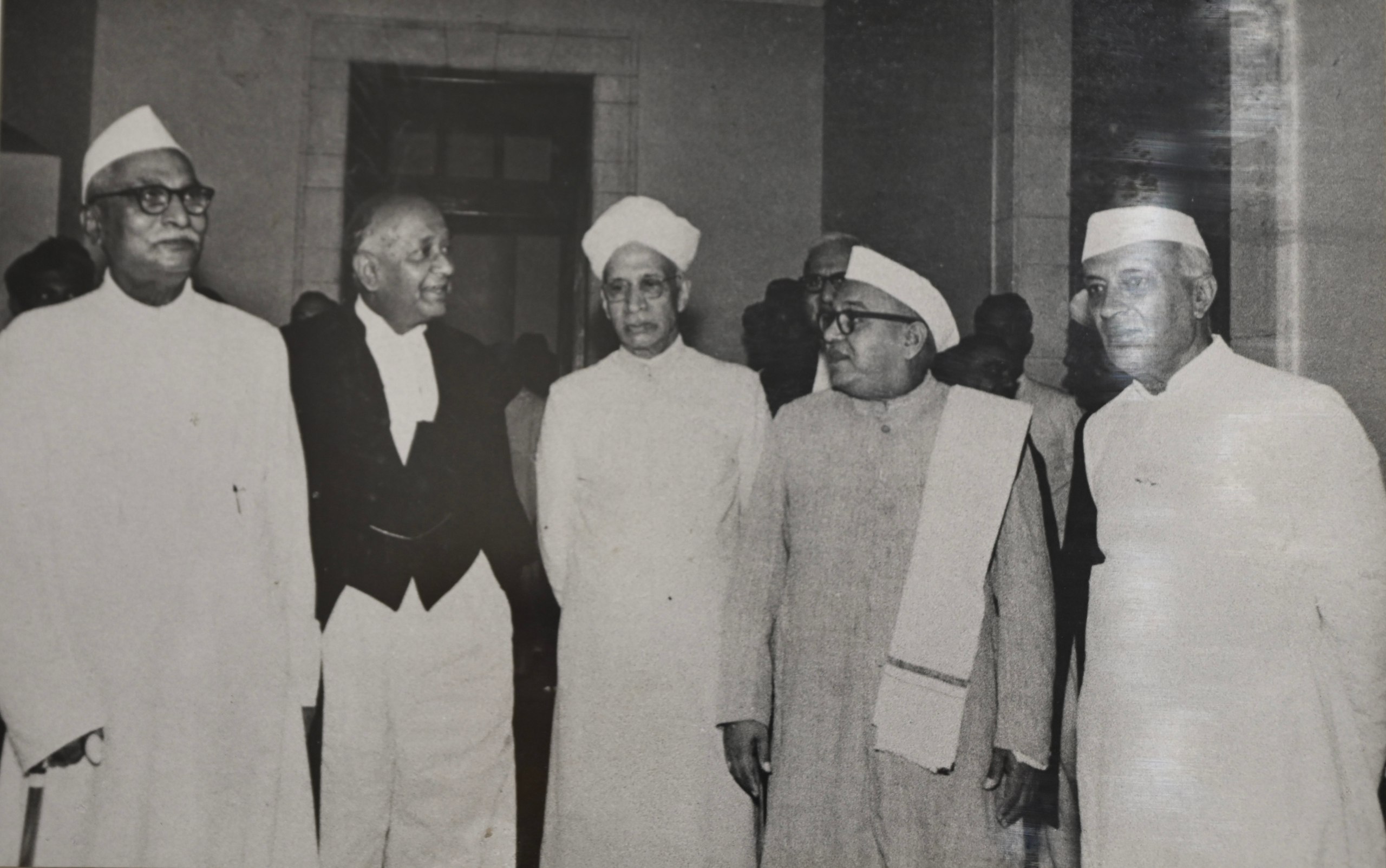History
The Supreme Court of India is the apex judicial body under the Constitution of India. Article 124 of the Constitution states that “There shall be a Supreme Court of India.” The Supreme Court came into existence on 26 January 1950 with the coming into force of the Constitution. The Supreme Court initially functioned from the old Parliament House till it moved to the present building located on Tilak Marg, New Delhi in 1958.
On 28 January 1950, two days after India became a Sovereign Democratic Republic, the Supreme Court was inaugurated. The inauguration took place in the Chamber of Princes in the old Parliament building where the Federal Court of India sat for 12 years from 1937 to 1950.
The inaugural proceedings began at 9:45 am. It was attended by
the first Chief Justice of India, Harilal J. Kania and Judges
of the Federal Court – Justices Saiyid Fazl Ali, M. Patanjali
Sastri, Mehr Chand Mahajan, Bijan Kumar Mukherjea and S.R.
Das, the Chief Justices of the High Courts of Allahabad,
Bombay, Madras, Orissa, Assam, Nagpur, Punjab, Saurashtra,
Patiala and the East Punjab States Union, Mysore, Hyderabad,
Madhya Bharat and Travancore-Cochin.
The proceedings were also graced by the Prime Minister of
India, ambassadors and diplomatic representatives of foreign
States, the Attorney General of India M.C. Setalvad, the
Advocate Generals of Bombay, Madras, Uttar Pradesh, Bihar,
East Punjab, Orissa, Mysore, Hyderabad, and Madhya Bharat and
a large number of advocates. To ensure that the Rules of the
Supreme Court were published and the names of all the
Advocates and agents of the Federal Court were brought on the
rolls of the Supreme Court, the inaugural proceedings were put
as part of the record of the Supreme Court.
After its inauguration on 28 January 1950, the Supreme Court commenced its sittings in a part of the old Parliament House. The Court moved into a new building in 1958. The first President of India Dr. Rajendra Prasad inaugurated the present building of the Supreme Court of India on 4 August 1958. The building is shaped to project the image of scales of justice. It has a 27.6 metre high dome and a spacious colonnaded verandah. The Central Wing of the building is the centre beam of the scales. The Chief Justice’s Court is the largest of the courts located in the centre of the Central Wing. There is a life size figure of Mahatma Gandhi, the apostle of truth and non-violence in the courtyard opposite the Chief Justice’s Court. The statue was unveiled by the 26th Chief Justice of India, Justice A.M. Ahmadi on 1 August 1996. There is also a 7-foot tall statue of Dr. B.R. Ambedkar which was unveiled by Hon’ble President of India, Smt. Droupadi Murmu in the presence of the 50th Chief Justice of India, Dr. Justice D.Y. Chandrachud on 26 November 2023. The statue honours the architect of the Constitution and captures him in a lawyer’s gown, holding a copy of the Constitution in his hand. To visit the building, one may book a guided tour from the Supreme Court website or obtain the visitor’s pass from the SuSwagatam portal or the front desk of the Supreme Court.
Three extensions were made to the original building- for the first time in 1979, then in 1994, and again in 2015. In 1979, two New Wings – the East Wing and the West Wing were added to the complex. There are 19 courtrooms in the various wings of the building. In 1994, the second extension of the building was made which connected the East and the West Wings.The third extension – the New Extension Block near the Supreme Court Museum was inaugurated by the then Chief Justice of India, Justice H.L. Dattu on 4 November 2015 and some of the Sections from the existing building were shifted to the new building. On 17 July 2019, Hon’ble President of India, Shri Ram Nath Kovind inaugurated the Additional Building Complex of the Supreme Court of India. The additional complex, with a total built up area of 1,80,700 sq. mts. has five functional blocks and one service block. The curvature of the building rises from the ground level in the colour scheme and sandstone external cladding, drawing inspiration from the original architecture of the Supreme Court. The Additional Building Complex also houses the New Judges’ Library.
The original Constitution of 1950 envisaged a Supreme Court with a Chief Justice and 7 puisne Judges – leaving it to Parliament to increase this number. In the early years, all the Judges of the Supreme Court sat together (en banc) to hear the cases presented before them. Considering the increase in workload, Parliament increased the number of Judges from 8 in 1950 to 11 in 1956, 14 in 1960, 18 in 1978, 26 in 1986, 31 in 2009 and 34 in 2019 (current strength). Today, the Judges sit in Benches of two and three and come together in larger Benches of 5 and more (Constitution Bench) to decide any conflicting decisions between benches of the Supreme Court or any substantial questions concerning the interpretation of the Constitution.
The proceedings of the Supreme Court are conducted in English. The practice and procedure of working of the Registry on the judicial side is regulated by the Supreme Court Rules, 2013 and Handbook on Practice and Procedure and Office Procedure. The Supreme Court Officers and Servants (Conditions of Service and Conduct) Rules, 1961 contains the rules with respect to the conditions of service and conduct of the staff attached to the Supreme Court of India.
 A rare photograph of the first Chief Justice of India,
Hon’ble Justice Harilal J.Kania with other Judges of the
Supreme Court, 1950.
A rare photograph of the first Chief Justice of India,
Hon’ble Justice Harilal J.Kania with other Judges of the
Supreme Court, 1950.
 The first Chief Justice of India, Hon’ble Justice Harilal
J. Kania with other Judges of the Supreme Court on the
dais and the Chief Justices of all High Courts on the
inaugural sitting of the Supreme Court on 28 January 1950.
The first Chief Justice of India, Hon’ble Justice Harilal
J. Kania with other Judges of the Supreme Court on the
dais and the Chief Justices of all High Courts on the
inaugural sitting of the Supreme Court on 28 January 1950.
 (From the left) Dr. Rajendra Prasad, President of India,
Shri S.R. Das, Chief Justice of India, Dr. S.
Radhakrishnan, Vice-President of India, Shri
Ananthasayanam Ayyangar, Speaker, Lok Sabha and Shri
Jawaharlal Nehru, Prime Minister of India on the occasion
of inauguration of the Supreme Court building on 4 August
1958..
(From the left) Dr. Rajendra Prasad, President of India,
Shri S.R. Das, Chief Justice of India, Dr. S.
Radhakrishnan, Vice-President of India, Shri
Ananthasayanam Ayyangar, Speaker, Lok Sabha and Shri
Jawaharlal Nehru, Prime Minister of India on the occasion
of inauguration of the Supreme Court building on 4 August
1958..

